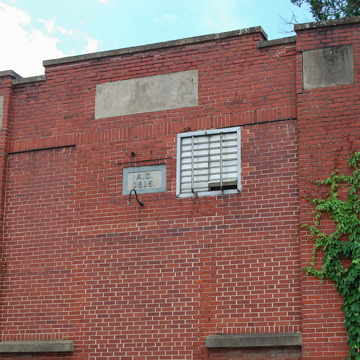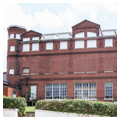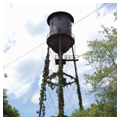You are here
Jackson Furniture Company (Piano Factory, Silk Mill)
Located on a hill in eastern Front Royal, this large two-and-a-half-story brick building best represents the town's late-nineteenth-century industrial boom. Built as a piano factory, by 1902 the building had become a silk mill known as the Royal Tapestry Company. Around 1913, Schwarzenbach, Huber and Company acquired the property and began manufacturing silk fabric at the facility. A large addition of 1919 to the rear was used for the manufacture of parachutes, which continued through World War II. Manufacturing operations ceased in the 1960s, and the Jackson Furniture Company acquired the building. Although the windows are now bricked up, the building retains much of its original character, exhibiting a variety of decorative brick details and a single, sandstone corner column with a cushion capital. An impressive three-story (originally four-story) northwest corner tower was crowned by a pyramidal roof and featured openings framed by pilasters and pediments. The Chicago Bridge and Iron Works constructed the facility's water tower in 1922.
Writing Credits
If SAH Archipedia has been useful to you, please consider supporting it.
SAH Archipedia tells the story of the United States through its buildings, landscapes, and cities. This freely available resource empowers the public with authoritative knowledge that deepens their understanding and appreciation of the built environment. But the Society of Architectural Historians, which created SAH Archipedia with University of Virginia Press, needs your support to maintain the high-caliber research, writing, photography, cartography, editing, design, and programming that make SAH Archipedia a trusted online resource available to all who value the history of place, heritage tourism, and learning.







